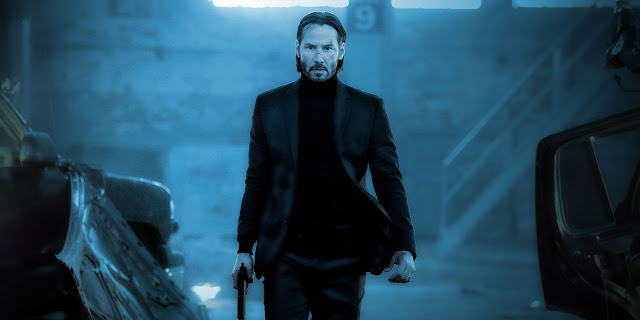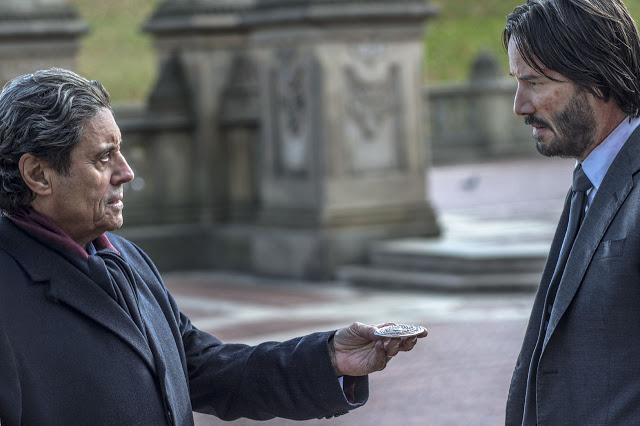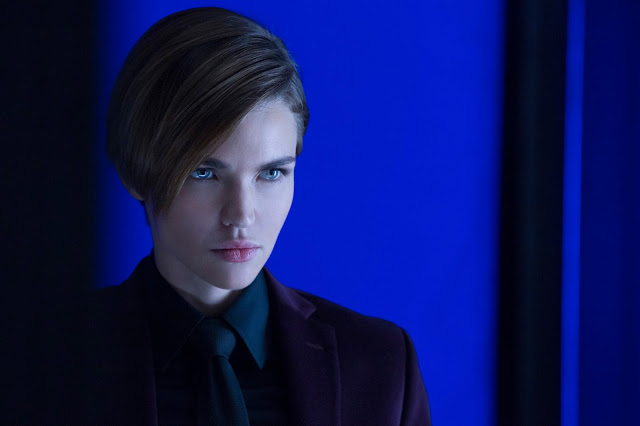Midway through John Wick: Chapter 2, the title character and a deadly foe engage in a ferocious, no-holds-barred brawl, complete with pistols, knives, and fists o’ fury. This type of fight is entirely familiar to action fans, but what happens next isn’t; after the combatants crash through the plate-glass window of a hotel, their vicious duel to the death is interrupted by the establishment’s proprietor. “Gentlemen!” he sternly admonishes them, raising his voice just a hair. “Need I remind you that business will not be conducted on Continental grounds?” The men, shrinking in stature from lethal death-dealers to sullen schoolboys being tsk-tsked by their principal, dolefully nod in assent, then agree to buy one another a drink.
This is the glorious insanity of the John Wick franchise. It takes the standard elements of your typical actioner—the gunfights, the car chases, the vendettas, the retired hero yanked back down to the underworld against his will—and situates them within an extravagantly tricked-out universe, a world with its own peculiar codes, currencies, and dialects. In the realm of John Wick, when the villain decides to put a bounty on his nemesis, he doesn’t scream or snarl or deliver a sneering speech. No, he takes out his phone, calls “Accounts Payable”, and places an order with a receptionist, one of a fleet of prim bureaucrats who may as well be fielding customer-service requests. “Murder Incorporated” was a snappy moniker; in John Wick, contract killing requires a literal contract.
Following a prologue that tidily sweeps up the loose ends from the first installment, Chapter 2 essentially hits the reset button, with John Wick (Keanu Reeves, entirely in his element) once more attempting to retire from a career of violence and death. He adjourns to his isolated New Jersey mansion, reseals his weaponry in the basement, and—in a move that will make animal lovers who remember the original profoundly uneasy—adopts an adorable pit bull puppy. After enjoying roughly 30 seconds of relaxation, John receives a nighttime visit from Santino (Riccardo Scamarcio), a dapper Italian who ominously slides a large brass medallion across the table. It has a bloody fingerprint inside, and in the world of John Wick, that renders it a sacred marker, meaning Santino can ask the world’s most fearsome assassin for a favor of his choice. And so, after Santino delivers a request, a whispered threat, and a gift from a grenade launcher, John is jetting off to Rome, tasked with killing Santino’s sister, Gianna (Claudia Gerini). (In the movie’s funniest line, an apprehensive local approaches John and asks with trepidation, “Are you here for the Pope?”)
In terms of plot, that’s virtually all Chapter 2 needs. Directed by the veteran stunt coordinator Chad Stahelski, the movie doesn’t so much tell a story as serve as a sleek and efficient dispensary of highly stylized action and exquisite chic. This makes it less a retread of the first film’s noirish, blood-soaked aesthetic than a bold and satisfying expansion of it. Unlike most critics, I was underwhelmed by the original, whose mythology I found intriguing but whose relentless action sequences ultimately bored me. The sequel is a dramatic improvement, but it doesn’t entirely solve these problems—its villains remain unimposing (one of the drawbacks of an invulnerable hero), and it retains the original’s penchant for flooding the screen with anonymous, expendable henchmen. (I would recommend a drinking game for every time John dispatches a goon with a perfectly placed headshot, but I don’t wish to be an accessory to murder.)
All the same, the nonstop carnage of Chapter 2 is far more engrossing, thanks to a heightened sense of style and a gleeful absurdity. Stahelski stages the shootouts with fluidity, giving the incessant gunfire a skillfully choreographed feel that occasionally becomes downright balletic. But it’s the smaller-scale combat that gives the movie its color and kick. John repeatedly wages war against Cassian (Common, nicely cast), and their brutal duels—including a surreptitious long-distance shootout with silencers and an electric mano-a-mano knife fight on the New York subway—course with the dynamism of two professionals practicing their craft. The same is true of John’s clash with Santino’s chief lieutenant, Ares (Orange Is the New Black’s Ruby Rose, mute and merciless), whom John just happens to fight inside a deliriously disorienting hall of mirrors. And in the movie’s most crowd-pleasing sequence, the much-discussed pencil from the original makes an appearance, and John joins Jason Bourne in the elite class of action heroes who have delivered death by writing implement.
It’s all incredibly cool, but where Chapter 2 really distinguishes itself from its high-octane brethren is its fanciful mythology. The cinematic universe of John Wick is thoroughly ludicrous, but it’s also marvelously unique, lending the movie a giddy individuality. It takes place in a world where every street violinist, sanitation worker, and panhandler is a potential hit man. Where all services are remunerated with large gold coins. Where a tailor is happy to place a rush order on your bulletproof suit. Where a sommelier would always be delighted to show you the latest upgrades in heavy artillery. Where the quiet murmuring of the word “excommunicado” doubles as the issuance of a death warrant. And where the peripheral figures are all venerable creatures of age-old wisdom, and who appear all the more wise and venerable by virtue of being played by reliable character actors such as Ian McShane, Lance Reddick, and Laurence Fishburne.
Anchoring everything is Reeves, who shrewdly refuses to inflate his title hero’s invincibility with excessive puffery. John Wick is more legend than character, but Reeves gives him a recessive quality that helps humanize him. You really believe that this black-clad man just wants to be left alone with his dog, even if you never once question the indisputable fact that he’s prodigiously gifted at killing people.
As high as John Wick: Chapter 2’s body count is, the movie is more about beauty than death. And as impressive and vigorous as its action scenes are, it’s the spaces between the bloodshed that really stand out, like a bravura sequence where two enemies stare one another down across a city square, only for their sightlines to become obscured when the fountain between them erupts into geysers of water. Shortly before that, one of John’s targets commits suicide in front of him, explaining that she knows death has arrived, so she’s choosing to end her life on her terms rather than his. She disrobes, lowers herself into a luxurious pool, and slits her wrists, staining the blue waters a deep, inky red. It’s a hypnotic, sad, and altogether stunning moment, and it epitomizes this crazy, captivating movie which, with personality and craft, turns savagery into art.
Jeremy Beck is the editor-in-chief of MovieManifesto. He watches more movies and television than he probably should.



